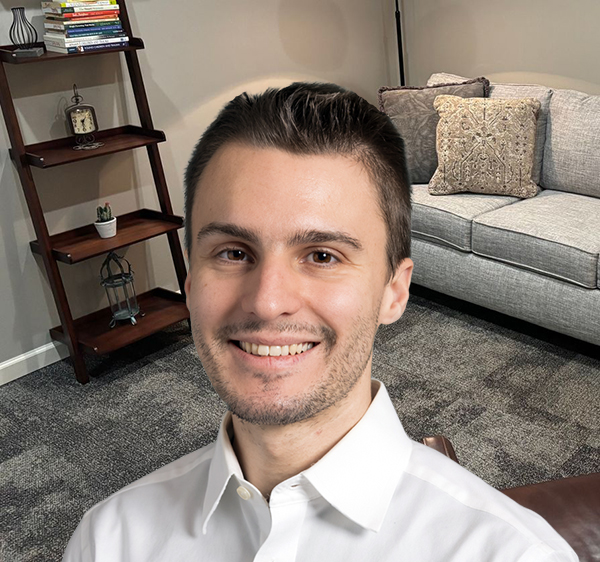OCD is an oft misunderstood diagnosis. It’s common for people to use the label of OCD as a shorthand way to describe perfectly normal, even adaptive forms of organization or tidiness. Indeed, the phrase “I’m so OCD” seems to have become so ingrained in our colloquial language that its meaning has become almost entirely diluted. If you find a level of satisfaction keeping the volume on your television set to an even number, or become distressed when you come home to find a mess, or even wash your hands frequently, then, according to pop psychologists on TikTok, you might have OCD.
Cultural Shifts
This phenomenon represents a single iteration of a broader, somewhat alarming trend on social media: diagnostic categories are now used a bit like personality traits, adopted and worn like a badge of honor. In what is likely a well-meaning effort to be non-pathologizing and accepting of the rich tapestry of neurodiversity, everybody and their pet rabbit are now self-diagnosing conditions like OCD, ADHD & autism, personality disorders, and so on.
This trend, however, is not without its drawbacks. Having adopted these diagnostic labels as essential qualities of one’s identity, they become a kind of self-fulfilling prophecy. People who struggle to regulate intense emotions suddenly believe they have bipolar, for example, and then will use this label as an excuse rather than take accountability or do the hard work of learning to self-regulate, which is available even to those who struggle with bipolar! Additionally, since these diagnoses are often so misunderstood and misused, they obscure real, treatable issues. And then the people for whom these diagnoses correctly apply start to wonder if they’re crazy, since their experience is not represented in the public conversation.
All of this is quite a shame, since the broadening understanding and acceptance of mental illness has alsobeen an enormous benefit to society in many ways, such as by normalizing the prevalence of mental illness, as contrasted with the oppressive weight of stigma that has persisted for even longer than we’ve words for many of these conditions. Instead, the conversation about mental illness has become so normalized and ubiquitized that mental illness has become trivialized, relegated to the margins of understanding, hand-waved aside as cute quirks and idiosyncratic behaviors that are so normal, don’t you know?
Okay, So What is OCD?
OCD is a disorder featuring a feedback loop between obsessions and compulsions. Obsessions are experienced as highly distressing, intrusive thoughts that provoke extreme levels of anxiety. Compulsions are often ritualistic, compensatory behaviors that the individual feels they must engage in to reduce this intense anxiety. Common obsessions and their corresponding compulsions include the following:
- Contamination/Cleanliness
- Excessive handwashing, even to the point of drawing blood.
- Near constant cleaning and disinfecting, often of the same surfaces, many times consecutively.
- Showering for long periods, often featuring rough, excoriating scrubbing.
- Repetitive rituals to prevent contamination.
- Constant Checking, often related to perceived danger.
- Repeatedly checking things like locks, stoves, lights, alarms, etc
- Persistent reassurance-seeking from others about things being correct or in place.
- Symmetry/Order: also known as “Just Right” OCD, featuring an overwhelming need for things to be perfectly aligned, organized, balanced, or symmetrical to avoid incredible distress.
- Constantly arranging and re-arranging objects until they feel perfectly aligned.
- Feeling compelled to repeat certain actions a specific number of times, such as tapping and counting.
- Harm: often involving distressing, intrusive, and intensely visual thoughts about harming oneself or others. Harm OCD is typically ego-dystonic, which means that the thoughts are contrary to the individual’s values. This is an important concept to understand, since people who struggle with this form of OCD often become deeply distressed by what these thoughts mean about them. (Note: Harm OCD thoughts do not make someone a bad person. The thoughts reflect intense fear of harm, rather than a desire for it.)
- Avoiding situations that trigger these thoughts.
- Seeking constant reassurance from others that they will not cause harm.
- Mentally reviewing past actions to ensure no harm was done.
- Performing “neutralizing” thoughts or rituals.
Other common themes include:
- Religious scrupulosity: obsessive preoccupation with religious rituals often involving compulsive prayer, confessions, or excessive concerns with blasphemy or sin.
- Relationships: Persistent, intrusive doubts about the stability or suitability of a relationship. Often involves constant reassurance-seeking.
- Sexual orientation: Obsessive concern with one’s sexuality, even despite clear evidence contrary to one’s concerns. Often involves compulsive reassurance or testing behaviors.
- Pedophilia: Highly distressing, intrusive, and unwanted sexual thoughts about children. (Note: As it relates to OCD, pedophilic thoughts are often considered ego-dystonic, rather than reflecting true feelings of attraction or intent to engage in actual pedophilic behavior.)
- False memory: Frequent obsessive doubting of past events, worry about things that may or may not have happened.
- Existential: Obsessions about the meaning of life, the universe, and one’s purpose. Characterized by constant rumination and worry.
- Sensorimotor: Obsessive preoccupation with drawing awareness to bodily functions, such as blinking, breathing, swallowing, heartbeat, etc. Often involves compulsive checking: “Am I still breathing?”
- Magical Thinking: Irrational worries that certain neutral signs or thoughts might have real-world, intensely negative consequences.
OCD: In Summary
Having outlined a wide variety of OCD presentations, we can begin to see how OCD can be incredibly debilitating, causing severe levels of distress and interference with one’s personal, social, and occupational functioning. Additionally, people who experience OCD often deal with multiple forms of obsessive and compulsive patterns, and their manifestation may shift over time, which makes it difficult to function normally without exceptionally high levels of anxiety and restriction of one’s behavior.
Alright, We Get It. What Does Treatment Look Like?
The gold standard treatment for OCD often involves a combination of a therapy called Exposure Response Prevention (ERP) and anti-depressants (SSRIs). ERP is a structured collaboration between a therapist and a client suffering from OCD, and is a form of exposure therapy informed by cognitive behavioral therapy (CBT). It begins by pinpointing that individual’s specific triggers for compulsive behavior. Having identified these triggers, the focus turns to organizing them into a distress hierarchy, where the client assigns each a level of distress that they experience. In ERP, the therapist works with the client by exposing them to progressively more intense triggers while preventing the ordinary compulsive response. In the place of these maladaptive responses, the therapist works with the client to substitute more adaptive responses.
This process can be quite challenging, but it’s essential to break the feedback loop between obsessive thoughts and the compulsions that ultimately maintain them. OCD is self-reinforcing because the compulsive, compensatory behaviors provide temporary relief, but exacerbate the disorder in the long term, making one feel they need to rely on these behaviors to self-regulate. ERP, by contrast, helps people to build distress tolerance and learn that it’s possible to experience a distressing thought without engaging with it or indulging it any further.
Closing Thoughts on OCD
OCD is a difficult disorder to deal with, but viable treatments are available. If you or a loved one struggles with anxiety or unwanted, distressing thoughts, consider reaching out to a licensed mental health professional. Try to avoid self-diagnosing or relying on AI to help understand your experience, as this can lead to spiraling and worsening anxiety. Remember that not everybody who experiences unwanted thoughts or anxious fears has OCD. Regardless, if you’re struggling, your experience deserves attention and validation. This is what mental health TikTok gets wrong: a diagnosis doesn’t validate or dictate whether you deserve treatment. You can make that choice!
This blog contains the views of Alex Thomson and is intended as educational content. It is not a replacement for therapy or formalized diagnostic assessment. Read full Disclaimer.
Alex Thomson is a licensed associate professional counselor in the state of Georgia and a certified trauma professional. He provides counseling services through Exhale Counseling Services in Acworth. He is supervised by Jennifer Wells, LPC, CPCS [LPC: 008961, CPCS: 4183].


